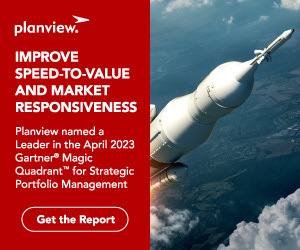
In this blog series, we are providing an overview of the seven planning types to help you deliver on strategy with a dynamic and continuous approach. In part one, we started with the basics of strategic planning and the need for a flexible and long-term approach, so you can zig when the market, competition, or internal issues zag.
In these next couple of installments, we’re going to look at the different types of planning as they relate to your desired outcomes referenced from the eBook “Planning Deconstructed: 5 Types of Planning Crucial to Delivering on Strategy with Dynamic and Continuous Planning.”
But before we jump into the first three planning types and some questions to consider, let’s take a moment and assess the way you plan now. This will help provide a frame of mind as you look at each type.
For starters, let’s identify the planners in your organization. Specifically, we’re looking for who really cares about planning and who usually steps up when a plan is needed.
Does this person have a particular way he or she plans? How often do they do it? For how long? And does that process involve revisiting a plan to see how well it worked? Also, take a look at the tools used as part of the planning process. Is a dedicated planning software being used or do you rely on standard applications like a spreadsheet?
Do these plans have strategic priorities, and are they flexible enough to change when new priorities or projects come into play?
All of these factors should provide a framework for how you can engage with the following plans, starting with financial planning.
1) Project Financial Planning/Budgeting
Project financial planning looks at all the financial information associated with a project. You’ll start by evaluating how much money you’re spending on resources for capitalized and non-capitalized costs related to the project.
With this type of planning, you can manage the budget/project forecast based on what was planned versus how much is actually being spent with snapshots of the project status. Financial planning should also be used to manage and track high-level resource efforts by organization and role.
As you’re going through this stage, check to see how well you’re doing by asking these yourself some of the questions addressed in the eBook:
- Can you manage the financial data associated with your project in a structure that aligns with your organizational financial data model?
- Can you forecast the costs of delivering each project with expected revenue/benefits?
- Can you use this information to calculate investment KPIs?
2) Strategic Planning
Strategic planning is used to define and manage an organization’s strategic missions and initiatives, especially in larger enterprises where uncertainty produces conflicts. Normally, we think strategic planning is reserved for executives or upper-level management. But project management teams also contribute to the strategic decision-making processes while keeping execs directly involved. Strategic planning lets you drive high-level objectives and strategies into more detailed aspects like resource demands, financials, dates, and benefits. For a deeper dive take a look a the whitepaper, “Four Elements of a Strategic Plan.”
Before jumping into a strategic plan, consider answering some of the questions from the eBook to make sure you’re on the right track.
- Can you define your organizational strategy in the form of a strategic plan?
- Can you define budgets and targets for the elements of the strategic plan and use them to fund initiatives and programs?
- Can you shift and adapt the strategic plan to address changes in market and competitive forces, strategic priorities, and continuous improvements?
3) Program Planning
Program management translates strategic objectives into measurable business outcomes with related initiatives. Strategic business objectives are often transformational and across departments or business units. This level of planning encompasses the creation, business case development, and approval of programs that deliver organizational strategic initiatives and ensure business outcomes.
To keep on track with program planning, make sure you’re comfortable with a few considerations taken from the eBook:
- You can initiate new programs to deliver the initiatives defined in your strategic plan, and you can describe and categorize these initiatives and assign ownership, providing an inventory of all of your programs.
- You can estimate the costs, benefits, and revenue associated with these initiatives, aligned with your organizational financial data model, to develop the business case for the program.
I encourage you to download the complete eBook, “Planning Deconstructed,” which contains the complete list of definitions, questions, and considerations in greater detail. Continue reading the Planview Blog for the next part of this blog series where we’ll review investment and capacity planning, outcome planning and roadmapping, to help your organization advance the way they plan and achieve business outcomes.
Keep learning by reading the next installments of this blog series, listed below:




![Project Management Software to Boost Your PMO into Hyper-Speed [Webinar]](https://blog.planview.com/wp-content/uploads/2018/10/Project-Management-Software-to-Boost-Your-PMO-into-Hyper-Speed-Webinar.jpg)

